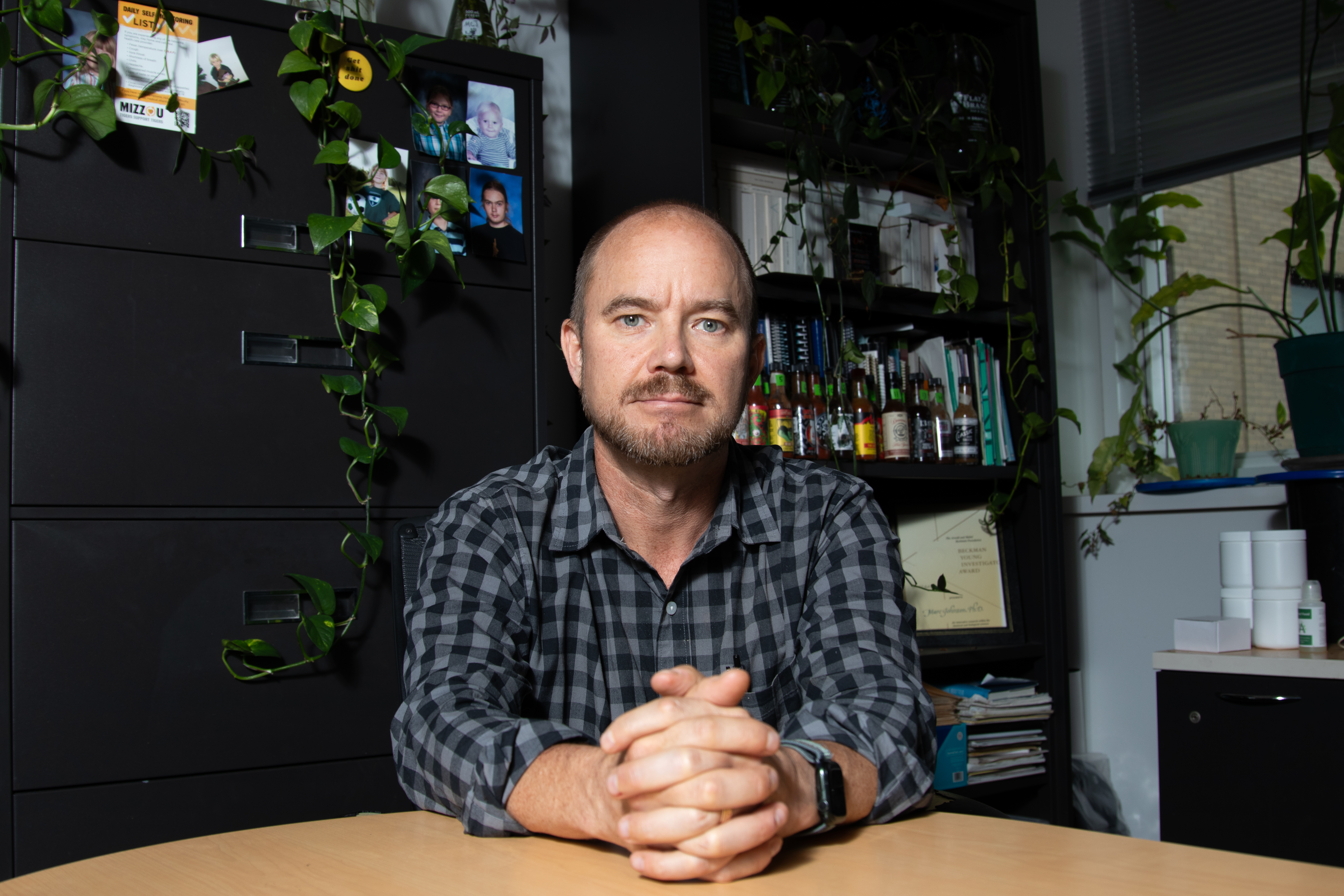Aug, 8, 2025
By Sarah Gassel
When Dr. Richard Hammer met with Roche Diagnostics in 2014, both saw the potential to give cancer treatment planning a long-needed update.
The company had met with 30 universities in its search for the right fit to develop a platform to optimize how doctors develop cancer treatment roadmaps. Whereas other schools were too large or complicated, Mizzou had the perfect combination of size and resources Roche was looking for, and the two struck up a partnership.
“Being smaller was an advantage because it's easier to move quicker and get things done,” said Hammer, an MU Health Care professor of clinical pathology and anatomical sciences. “In industry, being fast and agile is important.”
Designing the partnership
Securing industry grants from for-profit companies such as Roche is less pursued than the more traditional avenues of federal funding. Only comprising about 6 percent of academic research and development funding nationally in the past decade, it is less abundant than other sources and, therefore, typically more competitive.
“It's a very collaborative process to get from point A to point B, to get those funds in the door,” said Chase Bunger, research contracts manager for Mizzou’s Sponsored Programs Administration. “It all starts with really good faculty who are experts in their field and research.”
Non-disclosure and intellectual property come into play with corporate research, so lawyers like Bunger are necessary for contracts between companies and researchers and to help facilitate discussions. Because agreements are negotiated rather than set like with federal grants, these partnerships can be lucrative but are also less one-size-fits-all than with federal funding.
“The grants that we receive from industry, from for-profit entities, tend to be more focused on specific deliverables,” Bunger said.
In Hammer’s case, this deliverable was NAVIFY Tumor Board, software that streamlines meetings where cancer specialists collaborate on treatment plans for patients. He helped create, test and refine the platform that aggregates all of a patient’s information, resulting in an overall 30 percent reduced prep time for cancer teams. In turn, the partnership ensured Roche a more successful, research-backed product release.
This translational research builds toward clinical use and attracts more industry funding.
“It's valuable to them, because in the long run, they get something that'll work, rather than spend a year developing something that is likely going to fail,” Hammer said.
Experimenting with strategy
Though Hammer’s experience with industry funding is the more common route, there are other ways partnerships can arise. Marc Johnson, for example, had an unconventional path.

Marc Johnson, Bond LSC researcher and professor of microbiology and immunology, sits in his office at Bond LSC. Photo by Braiden Wade, Bond LSC
Johnson, a molecular virologist and Bond Life Sciences Center principal investigator, started talking to businesses through the social media site X. Johnson’s lab had pivoted into wastewater testing in 2020 to track COVID-19 spread and viral mutation in communities, and, amid discussing wastewater tracking of viruses on X, the owner of company Mighty Good Solutions got interested in an application for testing wastewater for opioids. The two soon set up a straightforward fee-for-service agreement.
“With industry, you have to have a product that someone is interested in funding, which takes a little bit of luck,” said Johnson, Bond LSC researcher and professor of microbiology and immunology.
While his main goal on social channels remains to educate the public and provide a forum for discussion, partnerships have become a natural byproduct. In fact, he says there are several doors that have been opened for him by people he only knows through social media. One of those is dubbed the “Lungfish Project,” a collaboration between Johnson and University of Wisconsin-Madison researchers that’s sponsored by marine research organization Inkfish LLC. This foundation funding will help develop and deploy air and wastewater pathogen testing for communities. While these blossoming relationships pay dividends, a few drawbacks stick out compared to government funding.
“There are certainly advantages to federal grants,” Johnson said. “You go through a much more diligent review process with federal funding of people looking at your science and critiquing it that you don't get from the other mechanisms.”
This loss of scientific feedback can be a downside, and, therefore, it is a factor to consider with funding sources.
Engineering a network
What industry funding lacks in scientific community, it makes up for in networking capabilities.
Seven years after Navify was developed, Hammer still gives Roche feedback on software updates and develops new facets of it. Not only does this further ensure the success of the platform, but it reflects another advantage of corporate research: a long-term partnership and source of funding. In that way, involvement in corporate research can be the gift that keeps on giving.
“Not only do you get exposure to the sponsor you're working with, but they have wide nets, wide exposures, and there's a lot of collaboration between industry,” Hammer said.
This has led him to receive proposals for projects from other companies, such as General Electric, that Roche refers him to. To benefit from this snowball effect, Hammer recommends his personal experience of starting with small projects, especially for researchers who may have to use their own time to take on new projects.
“You're going to have to be available and do it on your own time until you build connections to bring in enough money,” Hammer said.
Many times, though, gaining larger industry partnerships is not cut and dry. They require universities to invest in resources to incentivize and people to facilitate it — factors Mizzou continues to prioritize.
For researchers eager to get the ball rolling themselves and seek out this funding source, the best way may be to think like a businessperson.
“The trick is to figure out what they want that you can provide,” Johnson said